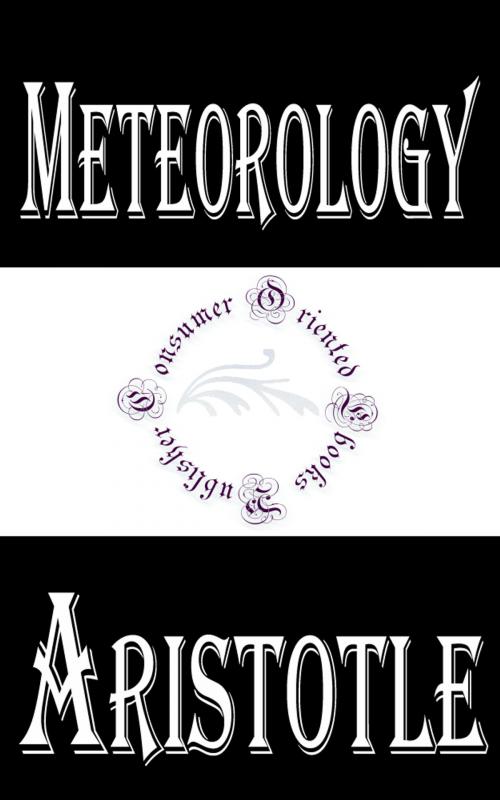Meteorology
Nonfiction, Science & Nature, Science, Earth Sciences, Religion & Spirituality, Philosophy, Ancient, Religious| Author: | Aristotle | ISBN: | 1230000273581 |
| Publisher: | Consumer Oriented Ebooks Publisher | Publication: | October 12, 2014 |
| Imprint: | Language: | English |
| Author: | Aristotle |
| ISBN: | 1230000273581 |
| Publisher: | Consumer Oriented Ebooks Publisher |
| Publication: | October 12, 2014 |
| Imprint: | |
| Language: | English |
Meteorology (Greek: Μετεωρολογικά; Latin: Meteorologica or Meteora) is a treatise by Aristotle which contains his theories about the earth sciences. These include early accounts of water evaporation, weather phenomena, and earthquakes. An Arabic compendium of the text called Al'thaar Al'ulwiyyah (Arabic: الآثار العلوية) made c. 800 CE by the Antiochene scholar Yahya ibn al-Bitriq and widely circulated among Muslim scholars, was translated into Latin by Gerard of Cremona in the 12th century and by this means during the Twelfth-century Renaissance entered the Western European world of medieval scholaticism. Gerard's "old translation" (vetus translatio) was superseded by an improved text by William of Moerbeke, the nova translatio, which was widely read, as it survives in numerous manuscripts; it received commentary by Thomas Aquinas and was often printed during the Renaissance.
Meteorology (Greek: Μετεωρολογικά; Latin: Meteorologica or Meteora) is a treatise by Aristotle which contains his theories about the earth sciences. These include early accounts of water evaporation, weather phenomena, and earthquakes. An Arabic compendium of the text called Al'thaar Al'ulwiyyah (Arabic: الآثار العلوية) made c. 800 CE by the Antiochene scholar Yahya ibn al-Bitriq and widely circulated among Muslim scholars, was translated into Latin by Gerard of Cremona in the 12th century and by this means during the Twelfth-century Renaissance entered the Western European world of medieval scholaticism. Gerard's "old translation" (vetus translatio) was superseded by an improved text by William of Moerbeke, the nova translatio, which was widely read, as it survives in numerous manuscripts; it received commentary by Thomas Aquinas and was often printed during the Renaissance.















